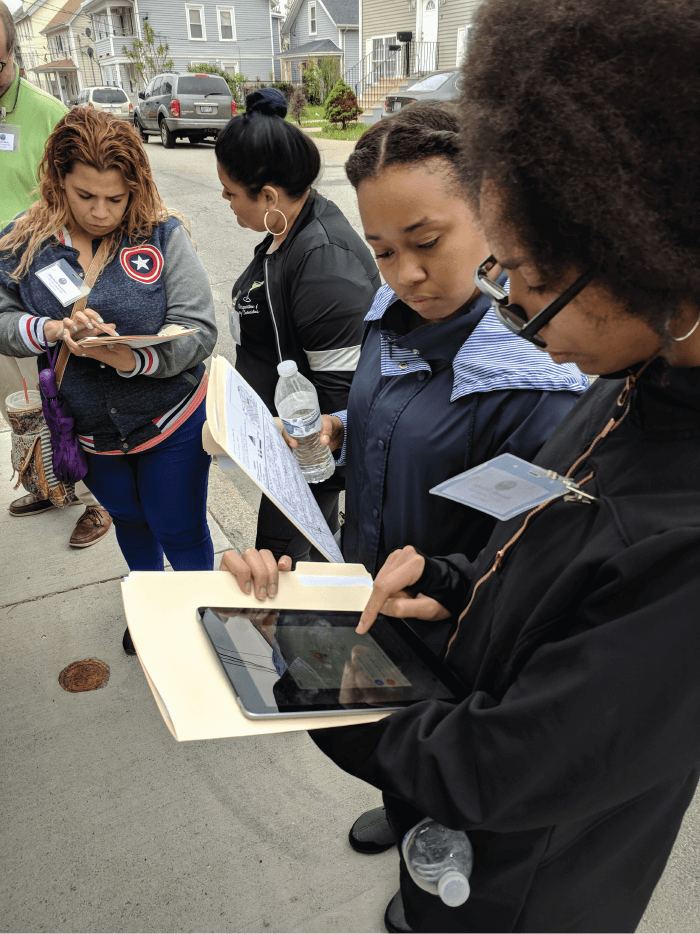The Census Bureau uses a Master Address File (MAF) to distribute self-response forms and identify which residences require enumerator follow-up for the decennial census. If an address is left off the Census’ MAF, residents within that unit will go undercounted. In hard-to-count communities, as many as 2-3% addresses may be missing from the Census’ MAF.
Due to budget cuts, the US Census Bureau will have fewer resources and staff to perform on-the-ground, address canvassing, which helps ensure the accuracy of its MAF. Cities and counties had the opportunity to contribute to an accurate MAF earlier this year by performing their own, local address canvassing, a process known as the Local Update of Census Addresses (LUCA).
We designed a mobile surveying tool to help municipalities like Los Angeles County and the City of San Jose perform LUCA, accounting for unconventional housing units, such as converted garages, within their region. Here’s what we learned from those partnerships:
1. Technology tools need to meet users where they are.
Solutions developed for census outreach need to maximize accessibility for members of hard-to-count communities, including low-income people, immigrants, minorities, and non-English speakers.
Users need simple, lightweight technology solutions that leverage how they use technology every day. The most frequent concern we received from LUCA volunteers was how much of their cell phone data plan our tool would use; downloading new apps was an issue for a similar reason. Many volunteers from HTC communities did not have space on their phones for mobile apps.
2. Technology tools need to be available in multiple languages.
We designed our LUCA tool to be used in Spanish and Vietnamese as well as English. In areas like San Mateo County, 40% of volunteers submitted addresses in Spanish.
Enabling users to use the tool in their primary language—via high-quality translations created by humans, not cheaply and inaccurately by Google Translate—established the credibility of the tool and enabled users to do their canvassing (i.e., answering the questions for each house accurately) better.
3. Reporting data should be automated, not requiring manual formatting or uploading.
Data reporting will be a significant barrier for census outreach. Many CBOs do not have the technical expertise or capacity to do reporting on their own. Even for CBOs that have technical capacity, manual reporting is time-intensive and will detract from resources that should be going towards outreach efforts. Finally, manual reporting comes in slowly, meaning the Census Bureau and government planners will be making decisions using outdated data.
Many of the CBOs we worked with on LUCA did not have the technical expertise or capacity to report on their own. One group in Long Beach that was highly trusted by the city’s large Cambodian community, a historically undercounted population, had only two volunteer staff who ran the organization. Automatic reporting allows these kinds of CBOs to focus on their area of expertise—mobilizing volunteers and communities.
4. Technology solutions need to be developed specifically for Census outreach.
The 2020 Census is a unique use case, requiring the development of custom technology. Repurposing other technology tools—such as those used for voter registration—will not work.
Unlike political campaign technology based on existing public databases, there is no publicly available database for census outreach. LUCA, for example, was based on the Census Bureau’s MAF, which can only be accessed by the Census Bureau and local government officials. For LUCA community-based address canvassing, our mobile survey tool was developed knowing that there wouldn’t be an outreach database readily available.
We’ve built our newest suite of census outreach tools with the above lessons as our guide. To learn more about these tools, visit our Census Tools page.

